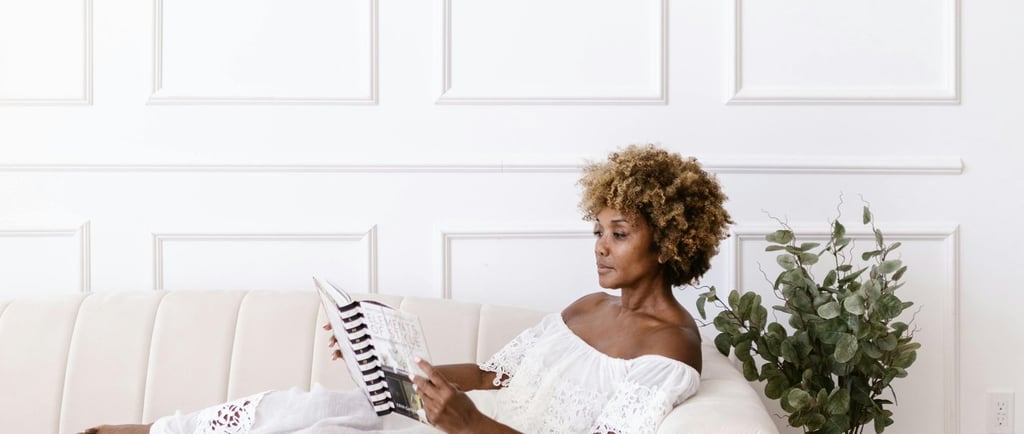How to Make a Space Feel Expensive
Achieving an expensive feel with minimalist modern art involves carefully curating your color palette, furniture, and art selections to create a space that feels calm, luxurious, and high-end. Remember, less is often more when aiming for true sophistication.
5/24/20253 min read


Elevate Your Space: The Art of Minimalist Modern Luxury
Creating a space that feels expensive isn't about filling it with costly items; it's about curated simplicity, thoughtful design, and a strategic use of modern art. Minimalist modern aesthetics, when executed with precision, can evoke a sense of calm, sophistication, and luxury. This guide will show you how to achieve that elevated feel.
The Foundation: Understated Elegance
Before we even get to the art, the backdrop of your space is crucial. Think clean lines, quality materials, and a disciplined color palette.
Neutral & Sophisticated Color Palette:
Off-Whites & Creams:
These are the bedrock of a luxurious minimalist space. They provide a pristine, gallery-like canvas that enhances natural light and allows art to truly shine.
Warm Grays & Greiges:
Opt for sophisticated shades that offer depth without being overwhelming. These create a serene and grounded atmosphere.
Deep Earth Tones (Subtly):
Consider very subtle hints of charcoal, deep olive, cobalt blue or muted terracotta in textiles or accent pieces for a touch of grounding richness.
Avoid:
Bright, saturated colors, busy patterns, or anything that feels overly playful.
Quality Over Quantity:
Every item in the room should serve a purpose and be of good quality. This doesn't necessarily mean expensive, but rather well-made and durable. Think about the tactile experience of materials like natural wood, stone, linen, or high-quality wool.
Clean Lines & Uncluttered Surfaces:
A hallmark of expensive design is the absence of visual noise. Keep surfaces clear, hide wires, and invest in smart storage solutions. Every piece of furniture should have a streamlined, architectural quality.
The Art of Subtraction: Minimalist Modern Art
Minimalist modern art is not just about bare walls; it's about the powerful impact of precisely chosen pieces that speak volumes without shouting. It emphasizes form, texture, and often, negative space.
Key Characteristics of Minimalist Modern Art for an Expensive Feel:
Abstract Forms:
Look for non-representational pieces that focus on geometric shapes, organic curves, or the interplay of lines. The ambiguity often sparks contemplation, adding intellectual depth.
Monochromatic or Limited Palettes:
Art that utilizes a narrow range of colors (e.g., black and white, shades of gray, or subtle earth tones) instantly communicates sophistication and restraint. This also ensures the art integrates seamlessly with your refined color scheme.
Texture & Materiality:
Consider pieces that highlight the inherent beauty of their materials – rough canvas, smooth metals, textured paper, or even subtle impasto. This adds a tactile richness that elevates the piece.
Scale and Proportion:
This is paramount. One large, impactful piece often feels more luxurious and intentional than many smaller, cluttered ones. Ensure the art is proportionate to the wall and the surrounding furniture. A piece that feels "just right" in its scale commands attention.
Thoughtful Framing:
When framing, opt for simple, high-quality frames – think thin black metal, natural wood (like oak or walnut), or frameless acrylic. The frame should complement the art, not compete with it. Avoid ornate or overly decorative frames.
Emphasis on Negative Space:
Many minimalist works use ample negative space (the empty areas around the subject) to draw focus and create a sense of calm and openness. This mirrors the uncluttered aesthetic of your room.
How to Source and Display:
One Statement Piece:
For a truly expensive feel, choose one significant, large-scale abstract painting, a striking sculptural piece, or a large format fine art photograph for a key wall. This becomes the focal point of the room.
Curated Pairings:
If you have multiple pieces, group them intentionally. A diptych or triptych of abstract pieces can create a powerful continuous narrative. Consider an asymmetrical arrangement of two or three pieces that relate to each other.
Consider the Light:
How natural and artificial light interacts with your art is vital. Position art where it can be appreciated without glare. Gallery lighting (track lighting or picture lights) can dramatically enhance the perception of value and importance.
Beyond the Wall:
Don't limit art to walls. A beautifully bound art book on a coffee table, a unique ceramic vase acting as a sculpture, or even the careful arrangement of functional objects can contribute to the "art" of the space.
The Finishing Touches: Subtlety is Key
Warm Lighting:
Warm, dimmable lighting creates an inviting and sophisticated ambiance. Use layers of light – ambient, task, and accent – to highlight architectural features and art.
High-Quality Textiles:
Luxurious fabrics like linen, cashmere, silk, or thick wool in neutral tones add tactile richness and comfort.
Metallic Accents:
A touch of brass, bronze, or matte black in hardware, lamp bases, or very subtle decorative objects can add a touch of understated glamour.
Greenery (Minimalist Style):
One or two carefully chosen, architectural plants (e.g., a Fiddle Leaf Fig, a Snake Plant, or a striking orchid) can add life without clutter. Use simple, elegant planters.
Scent:
A sophisticated, subtle scent (like sandalwood, vetiver, or a clean linen) can elevate the sensory experience of the room.
Achieving an expensive feel with minimalist modern art is about intentionality and restraint. By carefully curating your color palette, furniture, and art selections, you create a space that feels calm, luxurious, and undeniably high-end. Remember, less is often more when aiming for true sophistication.
Contact Me
hello@adriennemorris.com
Let's Connect
Terms & Conditions
© 2025, Adrienne Morris, All Rights Reserved.
